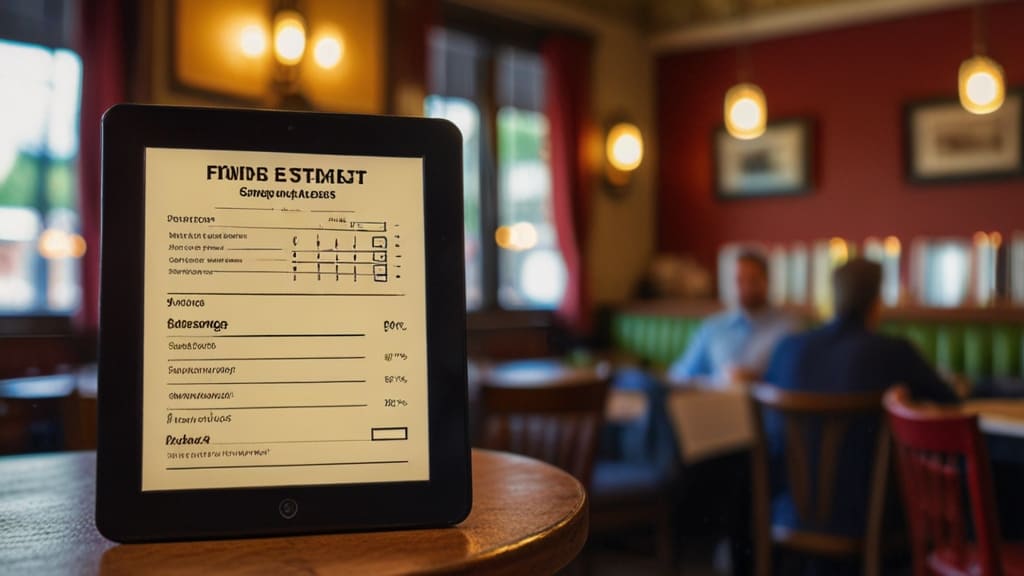The SERVQUAL Model: Measuring Service Quality by Comparing Expectations with Perception

Service quality is a critical aspect of any business, as it directly affects customer satisfaction, loyalty, and ultimately, the bottom line.
To effectively measure and improve service quality, companies need reliable tools and frameworks.
One of the most widely used models for this purpose is the SERVQUAL model. Developed in the 1980s by Parasuraman, Zeithaml, and Berry, the SERVQUAL model assesses service quality by comparing customers’ expectations with their perceptions of the actual service received.
What is the SERVQUAL Model
The SERVQUAL model is based on the premise that service quality can be measured by identifying the gaps between customer expectations and perceptions.
These gaps provide valuable insights into areas where a company can improve its service delivery. The model consists of five key dimensions of service quality:
- Tangibles: The physical aspects of the service, such as facilities, equipment, and appearance of personnel.
- Reliability: The ability to deliver the promised service dependably and accurately.
- Responsiveness: The willingness to help customers and provide prompt service.
- Assurance: The knowledge and courtesy of employees, and their ability to convey trust and confidence.
- Empathy: The provision of caring, individualized attention to customers.
The Five Dimensions of SERVQUAL
1. Tangibles
Tangibles refer to the physical elements of a service, which customers use to form their perceptions of quality. This dimension includes:
- Cleanliness and maintenance of facilities
- Modernity and functionality of equipment
- Professional appearance of staff
For example, in a restaurant, tangibles would include the cleanliness of the dining area, the condition of the furniture, and the appearance of the staff. Customers often judge the quality of the service based on these visible cues, making tangibles a crucial component of service quality.
2. Reliability
Reliability is about the ability of the service provider to deliver on its promises consistently. This dimension focuses on:
- Accuracy in billing and record-keeping
- Timeliness of service delivery
- Consistency in service performance
A reliable service provider ensures that customers receive what they expect, when they expect it. For instance, a reliable courier service will consistently deliver packages on time and to the correct address, which builds customer trust and satisfaction.
3. Responsiveness
Responsiveness measures the willingness and ability of employees to help customers and address their needs promptly. Key aspects include:
- Quick response to customer inquiries and complaints
- Flexibility in addressing customer requests
- Readiness to assist customers at any time
In the context of a hotel, responsiveness might involve quickly attending to a guest’s request for additional towels or resolving any issues with their room. High responsiveness can significantly enhance the customer experience and foster loyalty.
4. Assurance
Assurance involves the competence of employees and their ability to instill confidence in customers. This dimension covers:
- Knowledge and expertise of staff
- Courtesy and respectfulness of employees
- Ability to communicate effectively with customers
For example, in a financial advisory firm, assurance is demonstrated by the advisors’ knowledge of investment strategies and their ability to explain complex financial concepts clearly to clients. Assurance reassures customers that they are in good hands, which is essential for building trust.
5. Empathy
Empathy is about providing personalized care and attention to customers. It includes:
- Understanding customer needs and preferences
- Offering individualized service
- Demonstrating genuine concern for customers’ well-being
A retail store that remembers regular customers’ preferences and offers personalized recommendations is showing empathy. By making customers feel valued and understood, companies can create strong emotional connections and foster long-term loyalty.
Measuring Service Quality with SERVQUAL
To measure service quality using the SERVQUAL model, companies typically follow a structured process involving surveys and gap analysis. The steps include:
- Developing a SERVQUAL Questionnaire: The questionnaire contains pairs of statements for each of the five dimensions, one representing customer expectations and the other representing perceptions of the actual service. For example, an expectation statement might be, “The staff will be knowledgeable and able to answer my questions,” while the corresponding perception statement could be, “The staff were knowledgeable and answered my questions.”
- Administering the Survey: The questionnaire is distributed to a sample of customers, who rate their level of agreement with each statement on a Likert scale (e.g., 1 to 7).
- Calculating the Gap Scores: The difference between the expectation and perception scores for each pair of statements is calculated to determine the gap score for each dimension. A positive gap indicates that perceptions exceed expectations, while a negative gap shows that expectations are not met.
- Analyzing the Results: The gap scores are analyzed to identify areas where the service falls short and needs improvement. This analysis helps prioritize actions to enhance service quality.
Applying the SERVQUAL Model: A Case Study
To illustrate the application of the SERVQUAL model, let’s consider a case study of a mid-sized hotel chain. The hotel management wants to improve its service quality and decides to use the SERVQUAL model to assess their performance.
Step 1: Developing the SERVQUAL Questionnaire
The hotel develops a questionnaire with paired statements for each dimension of service quality. Some examples include:
- Tangibles: “The hotel’s facilities will be clean and well-maintained” vs. “The hotel’s facilities were clean and well-maintained.”
- Reliability: “The hotel will provide accurate and timely reservations” vs. “The hotel provided accurate and timely reservations.”
- Responsiveness: “The staff will be quick to respond to my requests” vs. “The staff were quick to respond to my requests.”
- Assurance: “The staff will be knowledgeable about the hotel’s services” vs. “The staff were knowledgeable about the hotel’s services.”
- Empathy: “The staff will show a genuine interest in my needs” vs. “The staff showed a genuine interest in my needs.”
Step 2: Administering the Survey
The hotel distributes the questionnaire to a random sample of recent guests, asking them to rate their level of agreement with each statement on a scale of 1 to 7.
Step 3: Calculating the Gap Scores
After collecting the responses, the hotel calculates the gap scores for each dimension. For instance:
- Tangibles: Expectations (6.5), Perceptions (6.0), Gap (-0.5)
- Reliability: Expectations (6.0), Perceptions (5.5), Gap (-0.5)
- Responsiveness: Expectations (6.2), Perceptions (5.8), Gap (-0.4)
- Assurance: Expectations (6.3), Perceptions (6.1), Gap (-0.2)
- Empathy: Expectations (6.4), Perceptions (6.0), Gap (-0.4)
Step 4: Analyzing the Results
The gap analysis reveals that the largest gaps are in tangibles and reliability. The hotel management decides to focus on these areas to improve service quality. They implement the following actions:
- Tangibles: Invest in refurbishing the hotel facilities and enhancing staff appearance standards.
- Reliability: Improve the reservation system and train staff to ensure accuracy and timeliness in service delivery.
Benefits and Limitations of the SERVQUAL Model
Benefits
- Comprehensive Assessment: The SERVQUAL model covers all key aspects of service quality, providing a well-rounded evaluation.
- Actionable Insights: By identifying specific gaps, the model helps companies pinpoint areas needing improvement.
- Customer-Centric: The focus on customer expectations and perceptions ensures that improvements are aligned with customer needs.
Limitations
- Subjectivity: Customers’ expectations and perceptions are subjective and can vary widely, making it challenging to generalize findings.
- Static Nature: The model captures a snapshot in time and may not account for changes in customer expectations over time.
- Cultural Differences: Expectations and perceptions can differ across cultures, potentially affecting the model’s applicability in diverse markets.
Enhancing Service Quality Beyond SERVQUAL
While the SERVQUAL model is a valuable tool for measuring service quality, it should be complemented with other strategies to ensure continuous improvement. Some additional approaches include:
- Customer Feedback: Regularly collecting and analyzing customer feedback through surveys, reviews, and direct interactions can provide ongoing insights into service quality.
- Employee Training: Investing in training programs to enhance employees’ skills and knowledge can improve service delivery across all dimensions of SERVQUAL.
- Technology Integration: Leveraging technology, such as customer relationship management (CRM) systems, can streamline service processes and enhance responsiveness and reliability.
- Benchmarking: Comparing service quality with industry standards and best practices can help identify areas for improvement and set realistic goals.
Final Thoughts
The SERVQUAL model is a powerful tool for measuring and improving service quality by comparing customer expectations with their perceptions.
If decision makers focus on the five key dimensions of tangibles, reliability, responsiveness, assurance, and empathy, companies can gain valuable insights into their service performance and identify areas for improvement.
However, to achieve sustained excellence in service quality, it is essential to complement the SERVQUAL model with other strategies and maintain a customer-centric approach.
This synergy can enhance customer satisfaction, loyalty, and ultimately, their success in the competitive market.



